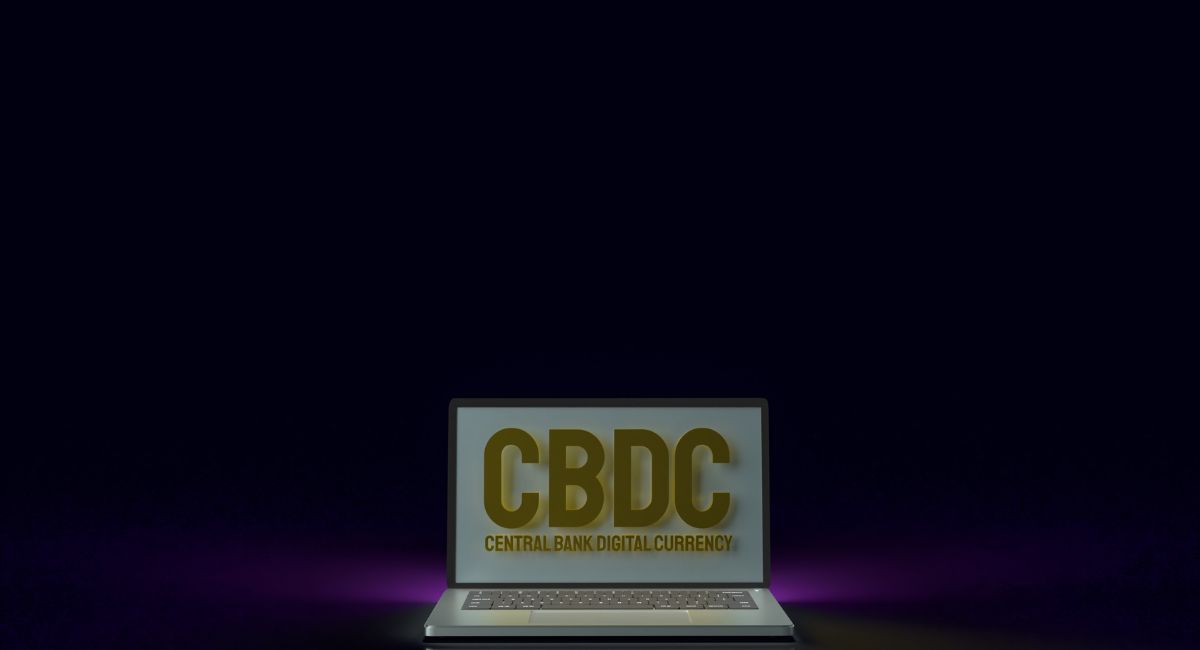Central Bank Digital Currencies (CBDC) : The Future of Digital Money?
Central Bank Digital Currencies (CBDCs) are becoming a hot topic in the world of finance. As the digital transformation continues to reshape how we handle money, central banks are exploring these digital currencies as a way to modernize payment systems. Unlike cryptocurrencies like Bitcoin, CBDCs are issued and regulated by central banks, making them a unique blend of digital innovation and traditional financial oversight. This article delves into the potential of CBDCs as the future of digital money and their implications for the global economy.
Key Takeaways
- CBDCs are digital currencies issued by central banks, distinct from private cryptocurrencies.
- The development of CBDCs is gaining momentum, with many countries actively exploring or implementing them.
- CBDCs could enhance financial inclusion by providing easier access to banking services for unbanked populations.
- Technological advancements, such as blockchain, are driving the innovation behind CBDCs.
- There are challenges and risks, including regulatory issues and potential impacts on traditional banking systems.
Understanding CBDC: A New Era of Digital Currency
Defining CBDC and Its Distinction from Cryptocurrencies
Central Bank Digital Currency (CBDC) is a digital form of a nation’s currency, issued by its central bank. Unlike cryptocurrencies such as Bitcoin, which operate on decentralized networks and are often subject to market volatility, CBDCs are centrally managed and backed by the government, ensuring stability and trust. CBDCs aim to provide the digital benefits of cryptocurrencies while maintaining the reliability of traditional fiat money. This distinction is crucial as it positions CBDCs as a bridge between the digital and traditional financial systems.
The Role of Central Banks in Issuing CBDC
Central banks are the cornerstone of CBDC issuance. They control the supply, ensuring that the digital currency aligns with national monetary policies. This role is vital in maintaining economic stability and preventing inflation. Central banks also play a part in integrating CBDCs with existing financial infrastructures, ensuring a smooth transition from physical to digital currency.
Key Features and Benefits of CBDC
CBDCs come with a host of features that set them apart from traditional money:
- Efficiency: Transactions are faster and cheaper compared to traditional banking methods.
- Financial Inclusion: By providing access to digital payments, CBDCs can reach unbanked populations.
- Security: With central banks at the helm, CBDCs offer a secure alternative to cash, reducing the risk of fraud and theft.
Additionally, CBDCs can be programmed to include specific rules and conditions, opening the door to innovative financial applications. This programmability could revolutionize how monetary policies are implemented, offering new tools for economic management.
As the world moves towards a cashless society, CBDCs represent a significant shift in how we perceive and interact with money. Their development and adoption could redefine financial landscapes globally, offering new opportunities and challenges alike.
The Global Landscape of CBDC Development
Central Bank Digital Currencies (CBDCs) are becoming a hot topic worldwide, with many countries racing to get ahead. Right now, 19 out of the G20 countries are in the advanced stages of developing their own CBDCs. This includes nations like Brazil, Japan, and India, which are already running pilot programs. Meanwhile, countries like The European Central Bank (ECB) are advancing their digital euro project, moving from initial phases to preparation as of November 2023. It’s clear that the momentum is building rapidly.
Notable CBDC Projects Around the World
Several countries have already launched their digital currencies. For instance, the Bahamas, Jamaica, and Nigeria have fully operational CBDCs. China’s digital yuan, also known as e-CNY, is the largest pilot, reaching over 260 million people and being tested in more than 200 different scenarios. Other notable projects include the UK’s digital pound and India’s e-rupee, which have made significant strides in their pilot phases.
The Role of International Collaboration in CBDC
International collaboration is key in the development of CBDCs, especially for cross-border transactions. There are currently 12 cross-border wholesale CBDC projects in progress. For example, Project mBridge connects banks from China, Thailand, the UAE, Hong Kong, and Saudi Arabia, aiming to simplify and speed up international payments. Such collaborations are not just about technology but also about setting standards and ensuring interoperability between different systems.
As countries explore CBDCs, the potential for a new global financial landscape becomes more apparent. These digital currencies could redefine how we think about money and transactions on a worldwide scale.
CBDC and Financial Inclusion: Bridging the Gap
How CBDC Can Enhance Access to Financial Services
Central Bank Digital Currencies (CBDCs) have the potential to revolutionize financial access by offering digital solutions where traditional banking has struggled. With CBDCs, individuals can access financial services through digital platforms, which can be a game-changer for those in remote or underserved areas. Unlike traditional banks, CBDCs don’t require a physical presence, making financial services more accessible to everyone. This digital approach can help overcome barriers like distance and cost that have historically limited access to banking.
The Impact of CBDC on the Unbanked Population
For the unbanked, CBDCs offer a new opportunity to participate in the financial system. Many people remain unbanked due to high fees, lack of documentation, or proximity to financial institutions. CBDCs can address these issues by providing a low-cost, secure, and easily accessible alternative. By integrating with mobile technology, CBDCs can reach individuals without traditional bank accounts, allowing them to store and transfer money safely and efficiently.
Challenges in Achieving Financial Inclusion with CBDC
While the potential benefits of CBDCs are significant, there are challenges in achieving true financial inclusion. One major hurdle is ensuring that everyone has access to the necessary technology, such as smartphones or internet connectivity, which are essential for using digital currencies. Additionally, there’s the challenge of educating the public about how to use these new financial tools effectively. There’s also the risk of excluding those who are not tech-savvy or who distrust digital systems. Addressing these challenges is crucial for CBDCs to truly bridge the financial inclusion gap.
Technological Innovations Driving CBDC
Blockchain and Distributed Ledger Technology in CBDC
Blockchain technology is at the core of many CBDC systems. It’s like the backbone that supports their structure. What makes blockchain special is its ability to create a transparent and tamper-proof ledger. This means every transaction is recorded in a way that can’t be changed, which helps build trust. Distributed ledger technology, on the other hand, allows for the decentralization of data storage across multiple locations, making the system more resilient against failures and attacks.
Security and Privacy Concerns in CBDC Systems
Security and privacy are big deals when it comes to CBDCs. While blockchain offers some security, the digital nature of CBDCs makes them vulnerable to cyber threats. Central banks need to ensure that these digital currencies are protected against hacking and fraud. Privacy is another concern. People worry about how much their financial data will be exposed. Balancing security and privacy is a tough challenge for developers.
The Future of Programmable Money with CBDC
One of the most exciting aspects of CBDCs is the idea of programmable money. This means that digital cash can have rules built into it. For instance, money could be programmed to only be used for certain things or to expire if not spent by a certain date. This opens up new possibilities for how money can be used and managed, potentially transforming economic systems and policies.
As we look to the future, the potential of CBDCs to reshape financial systems is both thrilling and daunting. While the technology promises efficiency and innovation, the path to widespread adoption is fraught with challenges that need careful navigation.
In conclusion, the technological innovations driving CBDCs are setting the stage for a new era of digital currency. With blockchain and distributed ledger technology at the helm, and considerations for security and privacy, CBDCs hold the promise of a more efficient and programmable financial future.
Economic Implications of CBDC Adoption
CBDC’s Role in Monetary Policy and Economic Stability
Central Bank Digital Currencies (CBDCs) are shaking up how monetary policy is managed. With CBDCs, central banks could have more direct control over the money supply, potentially allowing for more precise monetary interventions. Imagine if the central bank could inject money directly into the economy during a downturn or pull it out to combat inflation. This level of control could lead to more stable economic environments.
The Impact of CBDC on Traditional Banking Systems
Traditional banks might feel the heat with CBDCs in play. If people start holding their money in CBDC accounts instead of bank deposits, banks could see a drop in their funding sources. This could lead to higher interest rates on loans as banks try to attract more deposits. On the flip side, banks might innovate more to stay competitive, offering better services or rates to keep customers around.
CBDC and the Future of Cross-Border Transactions
Cross-border payments have always been a hassle, slow and expensive. Enter CBDCs, which could make these transactions faster and cheaper. By cutting out middlemen and reducing the need for currency exchanges, CBDCs could streamline international payments. This could be a game-changer for businesses operating globally, reducing costs and improving cash flow efficiency.
While the promise of CBDCs is exciting, it’s crucial to remember the potential risks. From destabilizing traditional banks to privacy concerns, the path to CBDC adoption must be tread carefully. The economic landscape is evolving, and CBDCs could be at the forefront of this change.
Challenges and Risks of Implementing CBDC
Regulatory and Legal Challenges in CBDC Deployment
Implementing a Central Bank Digital Currency (CBDC) comes with a host of regulatory and legal hurdles. For starters, there’s the need to establish a robust legal framework that ensures the digital currency complies with existing financial regulations. This involves addressing issues such as anti-money laundering (AML) and combating the financing of terrorism (CFT). Additionally, privacy concerns are at the forefront, as CBDCs could potentially allow governments to monitor individual transactions more closely. Balancing these privacy concerns with the need for transparency and security is crucial.
Potential Risks to Financial Stability and Security
One of the more pressing concerns is the risk to financial stability. If CBDCs become too popular, they might lead to a significant shift of funds from traditional banks, possibly resulting in a “bank run” situation where banks face liquidity issues. This could severely impact their ability to lend money and affect interest rates. On the security front, CBDCs are vulnerable to cyber threats. Protecting against hacking and ensuring the resilience of the digital infrastructure is paramount.
Addressing Public Concerns and Building Trust in CBDC
The success of a CBDC largely depends on public trust. People need to feel confident that their digital currency is safe and that their privacy is protected. To build this trust, central banks must engage in transparent communication and education campaigns. They should also be prepared to address any public concerns, such as the potential for government surveillance or the fear of losing control over personal finances. Providing clear information and demonstrating the benefits of CBDC can help alleviate these fears.
Implementing a CBDC is not just about technology; it’s about ensuring that the public feels secure and confident in using a new form of money. This requires careful planning, robust security measures, and a commitment to transparency from central banks.
CBDC and National Security: A Double-Edged Sword
The Geopolitical Implications of CBDC
Central Bank Digital Currencies (CBDCs) are reshaping the way countries think about money on a global scale. With major powers like China pushing forward, geopolitical dynamics are shifting. Some worry that if the U.S. doesn’t keep pace, it might lose its influence over global financial systems. This could limit its ability to enforce sanctions or monitor cross-border transactions. The race to establish CBDC standards is not just about technology; it’s about who holds the reins of global finance.
CBDC’s Role in Enhancing National Security
CBDCs can be a tool to boost national security. By digitizing currency, governments can track money flows more effectively, helping to combat illegal activities like money laundering and terrorism financing. This transparency can be a powerful weapon against crime. However, with this power comes the risk of overreach, where surveillance might infringe on personal freedoms.
Balancing Privacy and Surveillance in CBDC Systems
The introduction of CBDCs brings a balancing act between privacy and surveillance. While digital currencies offer a chance to enhance security, they also open doors to potential privacy invasions. Finding the right balance is crucial. Citizens need assurance that their financial data won’t be misused, while governments seek to maintain order and security. This tension highlights the ongoing debate about how much oversight is too much and what measures are necessary to protect both individuals and the state.
As countries navigate the complexities of CBDC implementation, they must weigh the benefits of increased security against the potential loss of privacy, ensuring that the scales of national interest and personal freedom remain balanced.
Conclusion
So, where does this leave us with Central Bank Digital Currencies? Well, it’s clear that CBDCs are more than just a passing trend. They’re shaping up to be a significant part of our financial future. As countries around the world explore and implement these digital currencies, we’re seeing a shift in how money is perceived and used. It’s not just about convenience or keeping up with technology; it’s about redefining the very nature of money itself. Sure, there are challenges and risks involved, like privacy concerns and the potential for financial instability. But the potential benefits, like increased financial inclusion and more efficient monetary policy, are hard to ignore. As we move forward, it’ll be interesting to see how CBDCs evolve and what role they’ll play in our everyday lives. One thing’s for sure, though: the conversation around digital money is just getting started.
Frequently Asked Questions
What is a Central Bank Digital Currency (CBDC)?
A CBDC is digital money created and issued by a country’s central bank. It’s like the cash you use, but in a digital form that you can use on your phone or computer.
How is CBDC different from cryptocurrencies like Bitcoin?
CBDCs are issued by central banks and are considered legal money, while cryptocurrencies like Bitcoin are created by private entities and are not backed by any government.
Why are countries interested in developing CBDCs?
Countries are exploring CBDCs to make payments easier and cheaper, to include more people in the banking system, and to keep up with digital trends in money.
What are some benefits of using CBDCs?
CBDCs can make payments faster and safer, help governments manage the economy better, and provide more people with access to banking services.
Are there any risks associated with CBDCs?
Yes, there are risks like cybersecurity threats and the potential for people to withdraw too much money from banks at once, which could cause financial problems.
How might CBDCs affect national security?
CBDCs could impact national security by changing how money is tracked and controlled, which might affect a country’s ability to monitor financial activities.
Stay informed with daily updates from Blockchain Magazine on Google News. Click here to follow us and mark as favorite: [Blockchain Magazine on Google News].
Get Blockchain Insights In Inbox
Stay ahead of the curve with expert analysis and market updates.
latest from tech
Disclaimer: Any post shared by a third-party agency are sponsored and Blockchain Magazine has no views on any such posts. The views and opinions expressed in this post are those of the clients and do not necessarily reflect the official policy or position of Blockchain Magazine. The information provided in this post is for informational purposes only and should not be considered as financial, investment, or professional advice. Blockchain Magazine does not endorse or promote any specific products, services, or companies mentioned in this posts. Readers are encouraged to conduct their own research and consult with a qualified professional before making any financial decisions. The featured image used is just a creative depiction of the title and it does not intend to hurt sentiments of any person or institution. If it hurts anyone sentiments, please do not hesitate to reach out to Blockchain Magazine.

 Bitcoin
Bitcoin  Ethereum
Ethereum  XRP
XRP  Tether
Tether  Solana
Solana  USDC
USDC  Dogecoin
Dogecoin  Cardano
Cardano  Lido Staked Ether
Lido Staked Ether  TRON
TRON  Chainlink
Chainlink  Avalanche
Avalanche  Wrapped stETH
Wrapped stETH  Wrapped Bitcoin
Wrapped Bitcoin  Stellar
Stellar  Sui
Sui  Toncoin
Toncoin  Hedera
Hedera  Shiba Inu
Shiba Inu  WETH
WETH  Polkadot
Polkadot  Litecoin
Litecoin  LEO Token
LEO Token  Hyperliquid
Hyperliquid  Bitcoin Cash
Bitcoin Cash  Bitget Token
Bitget Token  Uniswap
Uniswap  Wrapped eETH
Wrapped eETH  USDS
USDS  Ethena USDe
Ethena USDe  Pepe
Pepe  NEAR Protocol
NEAR Protocol  MANTRA
MANTRA  Aave
Aave  Official Trump
Official Trump  Ondo
Ondo  Internet Computer
Internet Computer  Aptos
Aptos  Monero
Monero  Mantle
Mantle  WhiteBIT Coin
WhiteBIT Coin  Ethereum Classic
Ethereum Classic  Bittensor
Bittensor  Cronos
Cronos  Dai
Dai  POL (ex-MATIC)
POL (ex-MATIC)  Algorand
Algorand 




